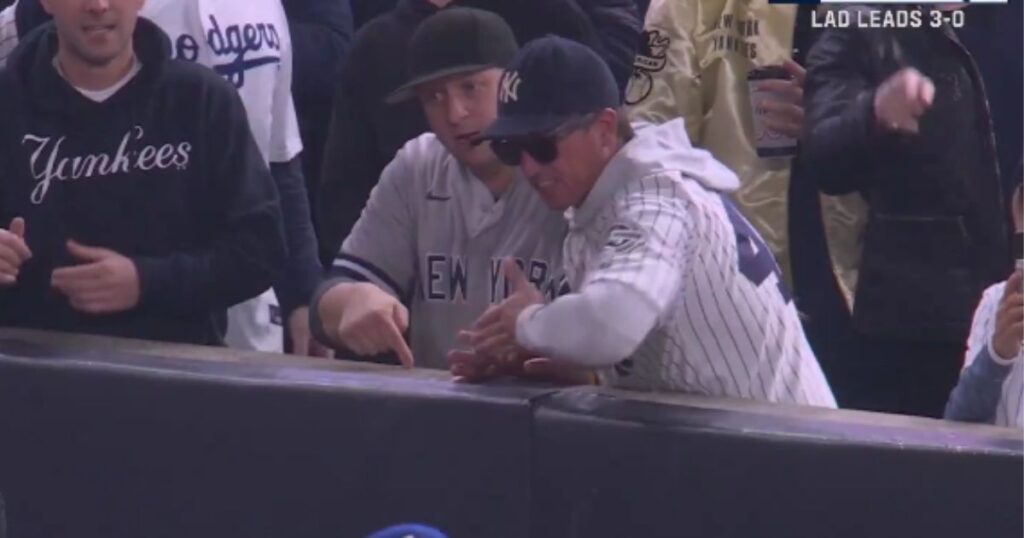On a dramatic evening during Game 4 of the World Series between the New York Yankees and the Los Angeles Dodgers, an unusual and somewhat chaotic scene unfolded at Yankee Stadium. It began when Dodgers right fielder Mookie Betts successfully gloved a foul ball during the first inning. However, this seemingly straightforward play took a bizarre turn when two Yankees fans, identified as Austin Capobianco and John Peter, attempted to interfere with Betts’ catch. Instead of simply observing the game, these fans decided to reach into Betts’ glove in an effort to claim the foul ball as their own. The unexpected act of fan interference resulted in the duo being ejected from the stadium. This incident, along with its aftermath, left a lasting impression on attendees and viewers alike, capturing the essence of both sporting spirit and excess.
Despite being reprimanded for their actions, Capobianco remained unapologetic, offering a rationalization for their behavior. He referred to a light-hearted camaraderie shared among fans in the stands and emphasized the need for fans to defend their territory, stating, “If it’s in our area, we’re going to ‘D’ up.” Though the intentions behind their actions were rooted in fun and enthusiasm, they clearly crossed a line that led to official repercussions. Such overzealous gestures at sporting events often provoke scrutiny, as they challenge the unwritten rules of fan conduct and the sanctity of on-field play.
From Betts’ perspective, the incident was hardly worth dwelling on, especially since it occurred early in the game, which the Yankees ended up winning. His primary concern was the game result, voicing indifference towards the disturbance when he commented, “It’s irrelevant. I’m fine. He’s fine. Everything’s cool. We lost the game.” Betts’ resilient attitude reflected a shared mentality among professional athletes who strive to maintain focus amid distractions, allowing them to push through adverse moments without letting small incidents derail their game plans.
However, not all Dodgers players shared Betts’ laid-back response. Rookie pitcher Ben Casparius expressed surprise at the incident, referring to it as “interesting” and noting that the unusual occurrence had an impact on the game’s atmosphere. Such reactions underline the significant influence a crowd’s behavior can have on the tone of a match, revealing how fan interactions can extend beyond mere entertainment dynamics into critical moments of gameplay.
The event drew parallels to past contentious moments in baseball history, like the infamous fan interference during Game 1 of the Yankees-Orioles ALCS in 1996. In that instance, a spectator’s premature catch turned the tide of the game; much like this latest incident, it reminded fans and players alike of the unpredictability surrounding spectator involvement in sports. With sports possessing a rich tapestry of memorable incidents that capture attention, this situation rekindled discussions on the boundary between enthusiastic fandom and direct interference in the game.
As the dust settled from the incident, questions arose about the repercussions the two fans would face and whether they could return to Game 5 of the series. Capobianco, a season-ticket holder, was optimistic about being allowed back, as he shared that they had received assurances regarding their return. The Yankees organization did not comment directly, leaving observers awaiting clarity on future fan conduct policies. This incident has sparked conversations about the balance between fan engagement and adherence to sportsmanship, further exploring the role of fans in the competitive theater of baseball and the implications of crossing established boundaries.

